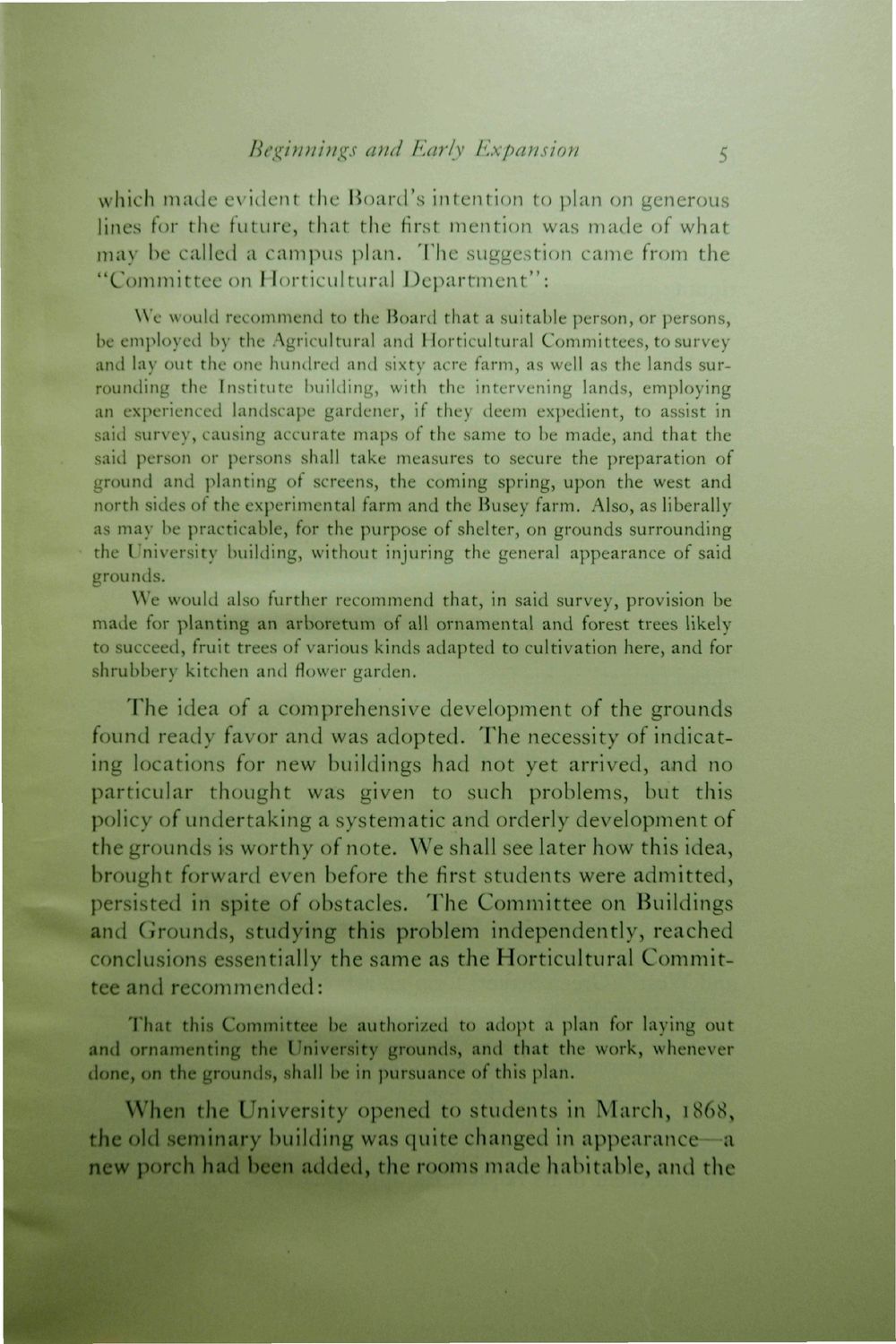| |
| |
Caption: Book - 30 Year Master Plan (Tilton & O'Donnell)
This is a reduced-resolution page image for fast online browsing.

EXTRACTED TEXT FROM PAGE:
Beginnings and Early Expansion 5 which made evident the Board's intention to plan on generous lines for the future, that the first mention was made of what may be called a campus plan. T h e suggestion came from the "Committee on Horticultural D e p a r t m e n t " : We would recommend to the Board that a suitable person, or persons, be employed by the Agricultural and Horticultural Committees, to survey and lay out the one hundred and sixty acre farm, as well as the lands surrounding the Institute building, with the intervening lands, employing an experienced landscape gardener, if they deem expedient, to assist in said survey, causing accurate maps of the same to be made, and that the said person or persons shall take measures to secure the preparation of ground and planting of screens, the coming spring, upon the west and north sides of the experimental farm and the Busey farm. Also, as liberally as may be practicable, for the purpose of shelter, on grounds surrounding the University building, without injuring the general appearance of said grounds. We would also further recommend that, in said survey, provision be made for planting an arboretum of all ornamental and forest trees likely to succeed, fruit trees of various kinds adapted to cultivation here, and for shrubbery kitchen and flower garden. T h e idea of a comprehensive development of the grounds found ready favor and was adopted. T h e necessity of indicating locations for new buildings had not yet arrived, and no particular thought was given to such problems, but this policy of undertaking a systematic and orderly development of the grounds is worthy of note. We shall see later how this idea, brought forward even before the first students were admitted, persisted in spite of obstacles. T h e Committee on Buildings and Grounds, studying this problem independently, reached conclusions essentially the same as the Horticultural Committee and recommended: That this Committee be authorized to adopt a plan for laying out and ornamenting the University grounds, and that the work, whenever done, on the grounds, shall be in pursuance of this plan. When the University opened to students in March, 1868, the old seminary building was quite changed in appearance—a new porch had been added, the rooms made habitable, and the
| |